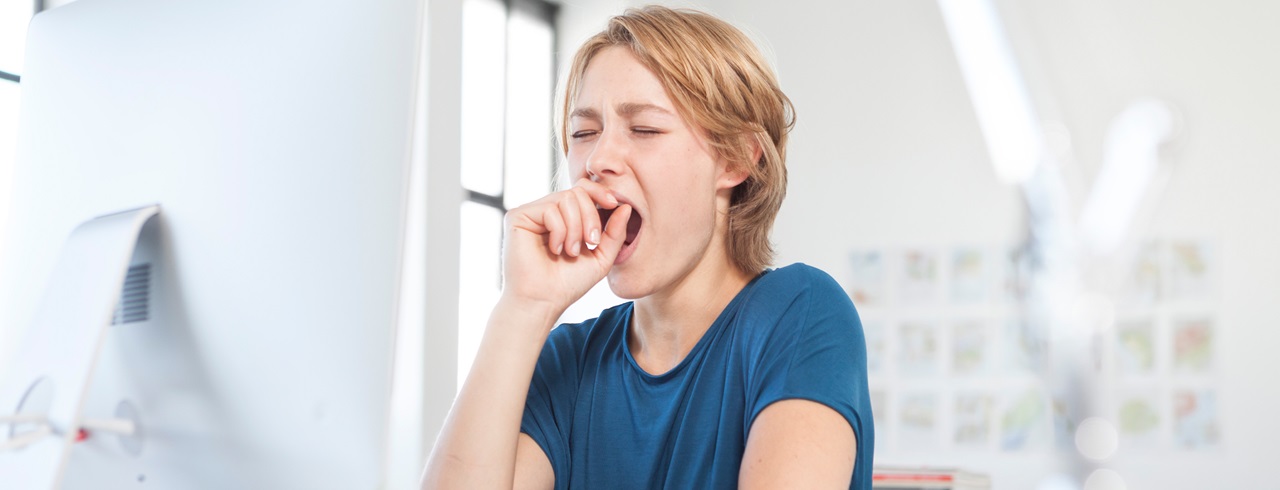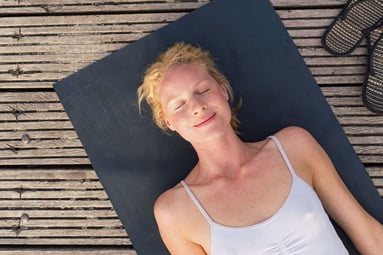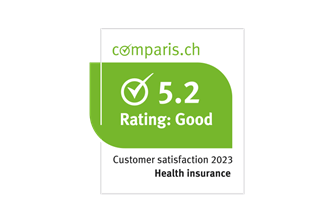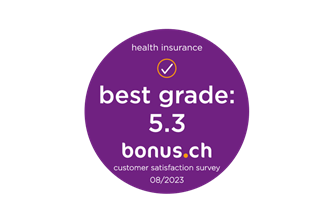
Pull yourself out of the afternoon slump
The smell of freshly cooked food is so tempting as you walk to the canteen. And while you're studying what’s on offer at the buffet, your stomach rumbles loudly to remind you that it’s there. No wonder you pile more on your plate than you need to feel full when you’re feeling too hungry. You devour the food on your overloaded plate anyway. You barely make it back into the office before your body responds to the meal you just enjoyed with the afternoon slump.
Avoid that feeling
This feeling isn’t actually just due to overeating. You can influence whether you feel listless in the afternoon or not.
1. Drink two litres of water every day
Feeling lethargic and struggling to get much done in the afternoon can be a sign of dehydration. If the body doesn’t get enough fluid, blood flow in the brain is reduced. As water plays a central role in supplying the brain with energy, it’s very important to drink enough throughout the day (at least two litres).
2. Get enough sleep
If we don’t get enough sleep, our body doesn’t perform as well as it could. So it’s worth going to bed at the same time every night and getting enough sleep. The amount of sleep an adult needs varies. The average ranges from between seven and eight hours.
3. Move around while you’re working
If you work in an office, it’s good to move around from time to time. For example by walking to the water dispenser. If you have a standing desk, it’s a good idea to alternate between sitting and standing. In addition to changing posture and walking to the kitchenette, you can also stretch your wrists, arms and legs every now and again to further stimulate blood circulation.
4. Eat a light lunch
Low-fat and low-sugar dishes should be high up on the menu, as they are easier to digest. But you can also enjoy whole grain products or lean meat and not need to worry about the afternoon. What always works well is vegetables. Any vegetable is good for lunch, from carrots and pulses to broccoli, cauliflower, fennel and mushrooms. If you eat from a buffet at lunchtime, you should stick to the healthy eating plate model when serving yourself. This recommends making your main course up of plenty of vegetables and salad (1/3 to 1/2 of the plate), some carbohydrates (such as wholemeal bread, wholemeal pasta, rice, polenta or potatoes) and some lean protein like chicken, veal, beef, game, sea fish, eggs, cottage cheese, low-fat quark or tofu. For dessert it’s best to opt for a portion of fruit (such as an apple).
5. Regularly ventilate the office
It can quickly get stuffy, especially in an office where several people are working. To increase the oxygen in the air again and thus up your performance, the office should be regularly ventilated.
6. Powernap
If the tiredness is too much to bear, it’s best to lie down for little while. A power nap shouldn’t last more than 15 to 30 minutes. A rest or a short nap helps your whole body regenerate. If you sleep any longer, your body enters the deep sleep phase and has more trouble fully waking up again quickly.
21.09.2022







